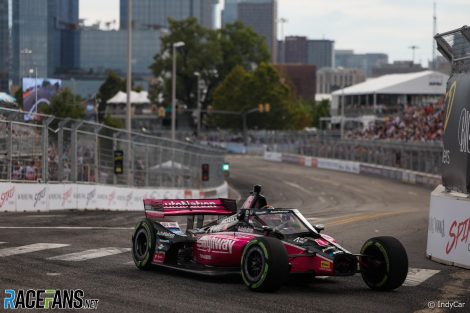Oh, Nashville. Even after modifications to the downtown street circuit, even with a year of experience baked into the cache of teams and most drivers, the 2022 IndyCar Music City Grand Prix was as much of a carnage-riddled mess as the inaugural edition.
From the feedback to our report of this race, it seems many people have made up their mind about IndyCar’s newest street circuit in one of the fastest-growing cities in the United States. “Crash-fest” was one descriptor. “Farce” was another, along with “garbage”.
Some already came to this conclusion after the first incident-packed IndyCar race a year ago, but after the year-two repeat, this sentiment has grown louder and impossible to ignore. Nashville has a three-year contract with IndyCar that ends in 2023, but does it have a future beyond that? Will it even make it that far?
It’s impossible to ignore a pattern over two years where over 40 percent of the race distances have been run under the safety car, and both races have been red-flagged due to accidents in the final five laps. Over the first and second Music City grands prix produced a combined 17 caution periods covering 69 out of a possible 160 racing laps (over 43%).
That’s the most for any two races at a street circuit since the ill-fated 2013 Houston Grand Prix doubleheader, which had 16 cautions over 53 out of 180 laps. The last of those cautions in race two, of course, was for the multi-car accident which left Dario Franchitti with injuries which led to his retirement. Thankfully, neither of Nashville’s race produced a serious injury, including in the supporting races.
Nashville’s reputation for carnage is said to be a product of the circuit. The southbound run across the Korean War Veterans’ Memorial Bridge leads into a heavy braking zone and potential passing opportunity into turn four, which then feeds into a single-file choke point through turn seven. This was a part of the course which was begging for a track-blocking incident, like the seven-car pile-up that happened on lap 26 of Sunday.
Scott Dixon – who survived the turn seven melee on Sunday to win – said changes made to address the circuit’s biggest trouble spots after the first race were a net positive. “The adjustments that they did this year, especially the transitions on and off the bridge, were huge,” said the six-time IndyCar champion. “I think they did a very good job on opening the sight line…
Click Here to Read the Full Original Article at RaceFans…

